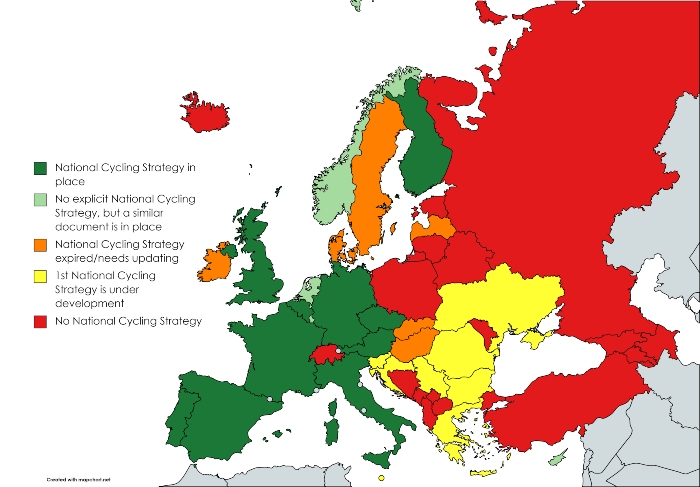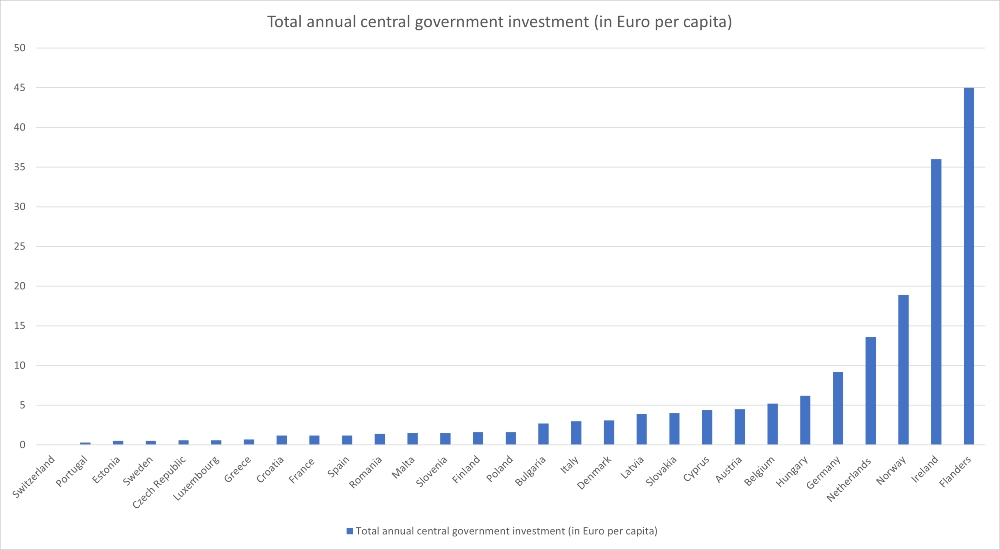
National cycling strategies are growing in prominence but there is still long way to go
ECF publishes the 2022 edition of the The state of national cycling strategies report. 14 of the 44 countries analysed now have a national cycling strategy in force, while eight are currently in the process of developing one for the first time
On 22 December 2022, the European Cyclists’ Federation (ECF) published the 2022 edition of the “The state of national cycling strategies” report, hereby providing a comprehensive overview of the status of national cycling strategies in 44 European countries.
The full report is available to download here.
Our analysis shows that national cycling strategies are growing in prominence, but that there is a still long way to go in many countries, particularly considering the political objective set by the pan-European Master Plan for Cycling Promotion that every country must develop and implement a national cycling strategy by 2030. The Master Plan was adopted in May 2021 and applies to 54 countries.
Key new developments in the report, compared to the 2021 edition, include:
- Italy adopting its first ever national cycling strategy.
- England publishing its Second Cycling and Walking Investment Strategy.
- France publishing a new Cycling and Active Mobility Plan 2022-2027.
- The Czech Republic adopting a Concept for Urban and Active Mobility 2021-2030.
- Luxembourg adopting a new National mobility plan 2035 with a dedicated section on cycling.
Including the new strategies adopted in 2022, 20 countries now have at some point adopted a national cycling strategy or similar policy document. 14 are currently in force, while six have expired and therefore need updating. Of the remaining 24 countries analysed in the report, eight are currently in the process of developing a national cycling strategy for the first time, primarily located in the Danube region. Big gaps still exist in some parts of Central and Eastern Europe, the Balkans, as well the Caucasus.

Map showing countries' NCS status (Source: The state of national cycling strategies in Europe - 2nd edition (2022))
Key findings
The report is the first to look in a systematic manner at spending levels of central governments, hereby revealing big differences between countries. According to our analysis, the northern region of Belgium, Flanders, appears to have been the top investor in cycling infrastructure in 2022, investing approximately €45 per capita, followed by runners-up Ireland (c. €35 PC) and Norway (c. €20 PC). Flanders has exclusive competence over its entire road network and therefore can be somewhat compared to the role of the national level in other countries.
Annually, the Flemish regional authorities invest about €300 million into cycling. In addition, the sub-regional level (the five Flemish provinces), as well as the local level, also undertake considerable investments. According to Fietsberaad Vlaanderen, towns and cities invest on average €15-20 per capita annually in cycling, three times more than five years ago. Flanders also absorbs the majority of the €411 million investment that is earmarked for cycling as part of Belgium’s National Recovery and Resilience Plan.
Climate and energy policies are increasingly becoming a main driver for change in every economic sector, including land transport. Extending the EU Emission Trading System to transport is the latest proof to that. While cycling is the most climate- and energy-efficient mode of transport par excellence, it still has not gained the attention it deserves in various climate and energy policies. ECF therefore strongly emphasises the need to fully take the potential of cycling into account and systematically include cycle measures in both the UN’s Nationally Determined Contributions as well as in the EU’s National Energy and Climate Plans. The latter are up for revision in 2023.
The findings in this report will provide a benchmark against which ECF intends to continue publishing annual update reports to track progress on the development and implementation of national cycling strategies in Europe towards 2030.

Graph showing countries expenditure per capita (Source: The state of national cycling strategies in Europe - 2nd edition (2022))
Regions:
Contact the author
Recent news!
Upcoming events
Contact Us
Avenue des Arts, 7-8
Postal address: Rue de la Charité, 22
1210 Brussels, Belgium









